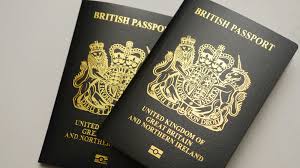As a result of Brexit making us a third country to the EU, if you are planning to catch a plane from Exeter or a ferry from Plymouth to the Schengen area (most of the EU excluding the Republic of Ireland and Cyprus but including Switzerland, Norway and Iceland) new red tape is likely to delay you when you arrive.
Since October 12 the rollout of the EU’s new Entry/Exit System has begun and this should be completed during April next year.
If you are travelling to a country in the Schengen area for a short stay using a UK passport, you will be required to register your biometric details, such as fingerprints and a photo, when you arrive. You do not need to take any action before you arrive at the border, and there is no cost for EES registration.
After it is fully implemented, EES registration will replace the current system of manually stamping passports when visitors arrive in the EU.
EES may take each passenger a few extra minutes to complete so be prepared to wait longer than usual at the border once the system starts.
You may need to create a digital record on your first visit to the Schengen area at the port or airport on arrival.
You will need to submit your fingerprints and have your photo taken at dedicated booths.
You will not need to provide any information before travelling to a Schengen area country.
If you are flying to a country in the Schengen area, you will complete EES checks when you arrive at your destination.
The checks may take a few minutes, so be prepared to wait during busy times.
If you’re travelling further afield and enter the Schengen area through the Port of Dover, Eurotunnel at Folkestone or St Pancras International, EES checks will be completed at the border, before you leave the UK.
You may also need to provide either your fingerprint or photo when you leave the Schengen area.
If you frequently travel to the Schengen area for work and/or leisure purposes, you must ensure that your total stay in the Schengen area is no more than 90 days in every 180 days.
You must be aware of the penalty and enforcement approach for exceeding the immigration limit in any individual Member State you plan to travel to, or through.
Your digital EES record is valid for three years.
If you enter the Schengen area again during this time, you will only need to provide a fingerprint or photo at the border, when you enter and exit.
EES is part of wider work the EU is doing to strengthen their border security.
In 2026, the EU is expected to start operations of the new European Travel Information and Authorisation System (ETIAS).
When ETIAS is introduced, you will need to apply for authorisation to enter Schengen area countries if using a UK passport.
You will need to provide personal information and details about your trip, and pay a 20 Euro fee, as part of the authorisation process.





Comments
This article has no comments yet. Be the first to leave a comment.